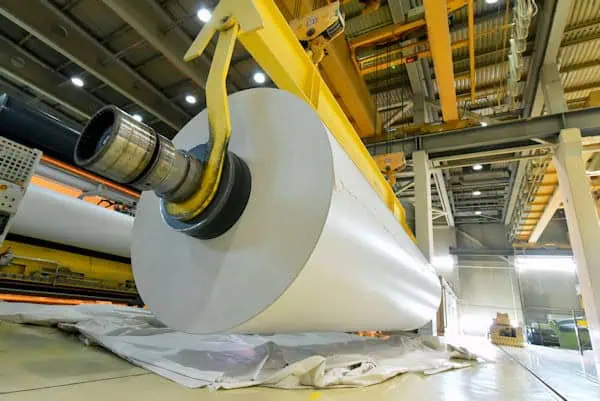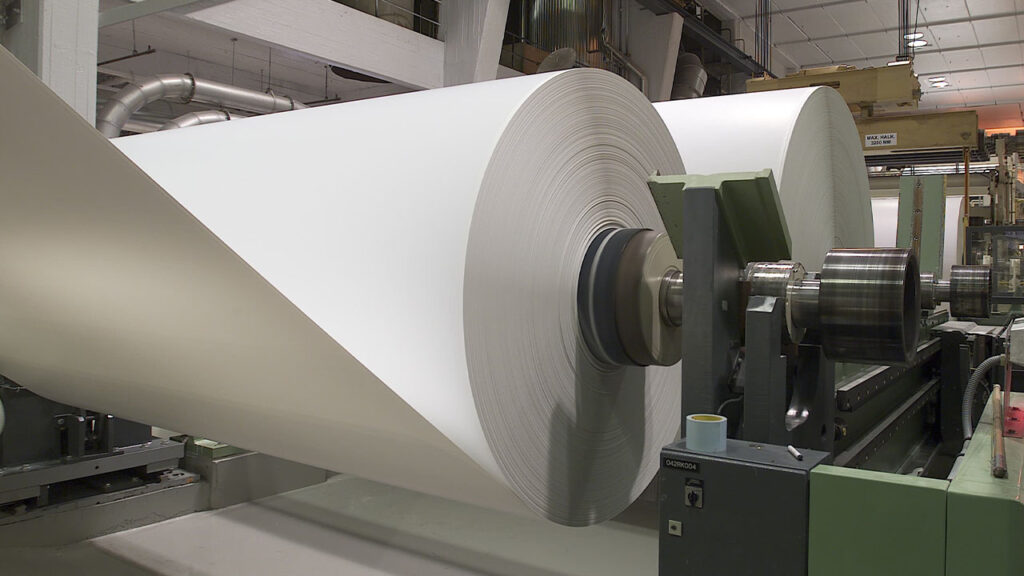The pulp and paper industry in Africa is expanding rapidly, driven by increasing demand for paper products and sustainable practices.

Pulp and paper industry in Africa , South Africa pulp and paper industry .
Introduction to the African Pulp and Paper Industry
Industry Overview: The pulp and paper industry in Africa is an important sector contributing to economic growth, with various countries having a rich natural resource base such as forests and agricultural waste. However, the industry has faced challenges related to infrastructure, technology and global competition. Main Products: The main products of the pulp and paper industry in Africa include newsprint, packaging materials, toilet paper, printing and writing paper etc. South Africa pulp and paper industry .
Geographical Distribution and Key Countries
South Africa: As the largest and most advanced market for pulp and paper in Africa, South Africa\’s industry is driven by established manufacturers like Sappi and Mondi. The country produces a wide range of paper products and exports them globally. Egypt: Another important player in the African market, both for local consumption and exports, Egypt focuses on packaging paper and napkin production. Kenya, Nigeria and Ghana: Emerging markets where population growth and urbanization are driving demand for paper products, especially packaging and printing papers.

Raw Materials for Pulp and Paper Production
Timber: Pulp production relies on sustainable forest and timber resources. South Africa, for example, relies on plantations of fast-growing species such as eucalyptus and pine. Agricultural waste: In countries such as Egypt and Kenya, agricultural waste such as sugarcane bagasse and wheat straw are used to make paper pulp.
Recycling: Many African countries, including South Africa, are increasing their use of recycled paper to reduce their environmental impact and dependence on virgin wood pulp. Pulp and paper industry in Africa .
Market Trends and Consumption
Urbanization and Population Growth: These factors have led to a growing demand for paper, especially for packaging materials. As Africa’s middle class expands, there is also increased demand for printed materials, including books and magazines . Export Market: South Africa remains the dominant exporter, while other countries are beginning to see growth in their export potential. Pulp and paper industry in Africa .
The export of packaging and tissue papers is growing due to the increased global demand for environmentally friendly products . Paper Recycling and Sustainability: There is a growing trend towards sustainable production practices, with more investments in recycling technologies and eco-friendly alternatives. This is particularly crucial in South Africa, where environmental sustainability is a key focus.
Major Players in the Industry
Sappi: A global leader in the pulp and paper industry, Sappi has a strong presence in South Africa, producing a wide range of paper products from printing paper to packaging materials. Mondi: Another major player operating in South Africa, Mondi produces high-quality packaging paper and is expanding its presence in other parts of Africa. Nile Pulp & Paper Company: It is an important player in the Egyptian market and focuses on the production of various paper products such as tissue paper and wrapping paper.
Companies, such as Kenya’s paper manufacturer: Pan African Paper Mills, produce a considerable amount of paper mainly for the domestic market. Pulp and paper industry in Africa .
Challenges Faced by the Industry
Infrastructure Issues: Many African countries face inadequate infrastructure for efficient transportation and distribution of raw materials and finished products.
Environmental Concerns: The sustainability of forests is a critical issue, especially in countries where deforestation is rampant. In response, companies are adopting more sustainable practices such as using recycled paper and renewable energy.
Energy supply: The pulp and paper industry is energy intensive and erratic energy supplies can hinder production, especially in countries such as Nigeria and Kenya. Global competition: Cellulose and African papers are often facing strict competition with international players, especially in global exports. The industry needs to balance quality and economic efficiency to maintain competitiveness.
Opportunities in the African Pulp and Paper Industry
Investments in technology: the adoption of a modern mechanism and effective production methods can increase productivity and reduce costs, creating opportunities for growth. Pulp and paper industry in Africa .
Increase in disposal: as more waste is processed, there is a potential to reduce dependence on virgin materials, which can lead to cost savings and a more stable industry. Sustainable practices:
There is an increasing demand for environmentally friendly products, such as recycled paper and paper made from sustainably sourced sources. Pulp and paper industry in Africa . African countries can benefit from this global transition towards sustainable development. Growing Packaging Market: With the rise of e-commerce and increasing demand for packaged products, the paper packaging market has become more robust, especially in countries like South Africa, Kenya and Egypt.

Regulatory and Policy Framework
Government’s support: In some countries, the government supports the paste and paper industry, thanks to tax incentives and subsidies with sustainable practices and ecological products.
International Standards: African companies need to comply with international environment and quality standards in order to be competitive in the global market.
Environmental Regulations: Countries are increasingly enforcing stricter environmental regulations, which encourage industries to adopt cleaner and more sustainable practices.
Future Outlook and Growth Prospects
Expanding the recycling industry: As Africa’s economies grow, the demand for paper and recycled products will continue to increase. Increased awareness of sustainability will encourage investment in more efficient recycling systems. Regional manufacturing growth: Countries other than South Africa are gradually increasing their production capacity, particularly in packaging materials, and are likely to expand their export markets.
Technological innovation: Innovation in production technologies and waste management is expected to reduce costs and environmental impact, opening up new growth opportunities. Pulp and paper industry in Africa .
A Comprehensive Overview of Africa’s Pulp and Paper Industry
The pulp and paper industry in Africa is a vital component of the continent’s economic and industrial landscape. With increasing urbanization, a growing middle class and rising literacy rates, the demand for paper products, including packaging materials, tissue paper and writing paper, is increasing. Pulp and paper industry in Africa .
South Africa, Egypt and Kenya have emerged as major players in the sector, leveraging their unique resources and market conditions, but the industry faces significant challenges including inadequate infrastructure, environmental concerns and competition from global markets. Despite these obstacles, the sector has great potential for growth, driven by innovation, sustainability efforts and regional economic growth.
Geographic Distribution and Leading Nations
South Africa remains the largest and most developed pulp and paper market in Africa. The country is home to industry giants such as Sappi and Mondi, which have established themselves as global leaders. These companies not only meet domestic demand but also export their products to international markets . Egypt is also a significant player, focusing primarily on the production of wrapping and tissue paper products due to its strategic location and access to raw materials such as agricultural waste.
Meanwhile, countries such as Kenya, Nigeria and Ghana are emerging as promising markets. Rising urban populations and industrial sectors are driving demand for paper products, especially in the areas of packaging and printing. Each of these countries has its own advantages and contributes to the diversity of Africa’s pulp and paper industry. Pulp and paper industry in Africa .
Raw Materials and Sustainability Efforts
The availability and access to raw materials is crucial to the growth of the pulp and paper industry. In South Africa, large-scale plantations of fast-growing tree species such as eucalyptus and pine provide a steady supply of wood for pulp production. In contrast, countries such as Egypt and Kenya use agricultural waste such as sugarcane bagasse and wheat straw to produce paper pulp. Pulp and paper industry in Africa .
Recycling has also become an important part of the sector, with many companies investing in systems to collect and recycle waste paper. This not only reduces our reliance on virgin raw materials but also meets global sustainability goals: as environmental issues become more prominent, there is a growing demand for sustainable practices, such as responsible forest management and the adoption of cleaner production technologies.
Market Trends and Emerging Opportunities
The African pulp and paper market is witnessing several transformative trends: Urbanization and population growth are increasing the demand for packaging materials, especially with the rise of e-commerce and the need for sustainable packaging solutions. Paper towel consumption is also increasing, reflecting improving living standards and hygiene awareness.
Moreover, the global shift to organic products creates new opportunities for African producers, especially in export markets. Companies that adopt green technologies and offer environmentally friendly products are better positioned to meet this demand. Investments in advanced machinery and production methods can further improve productivity and cost efficiency, allowing African producers to compete effectively on the global stage.
Challenges and Industry Dynamics
Despite its possibility, African cellulose and paper industry face several obstacles. Insufficient infrastructure, such as unreliable energy supply and poor transportation networks, causes serious operational issues. Environmental problems, including deworming and water pollution, are also the basic problems, which caused more stringent rules and the need for sustainable practice.
In addition, the industry should fight global competition, especially from Asian and European manufacturers, which often have advantages. However, African businesses are gradually overcoming these obstacles through strategic investments, partnerships and a focus on innovation. Governments are also playing a supporting role by putting in place policies that encourage local production and promote sustainability.
Future Prospects and Growth Potential
The future of Africa’s pulp and paper industry looks bright, driven by a combination of economic growth, technological advances and increased environmental awareness. Recycling is expected to play a larger role, with greater investment in collection and processing infrastructure. Countries outside of South Africa will probably expand their production capacities, in particular in packaging materials to meet increasing domestic and regional demand.
Innovation in production technologies and waste management will further reduce costs and environmental impact, creating new growth opportunities. As African economies continue to develop, the pulp and paper industry is poised to make a significant contribution to the continent’s industrial and economic development.
The African pulp and paper industries are important, balance between challenges and enormous opportunities. Infrastructure’s deficit, concerns about the environment, and global competition offer terrible hurdles, but the possibility of the sector cannot be denied.
By adopting sustainable practices, investing in technology and leveraging the continent’s abundant resources, Africa’s pulp and paper industry can achieve significant growth. As regional markets expand and global demand for environmentally friendly products increases, the industry is well-positioned to play a key role in Africa’s transition to industrialization and sustainable development.
Africa’s Evolving Pulp and Paper Industry
The African pulp and paper industry has undergone significant change over the years, adapting to changing market demands and global trends. Rich in natural resources and poised for rapid industrial growth, Africa presents unique opportunities for the sector. The growing demand for environmentally friendly products is a combination of urbanization and the expansion of the middle class to correct the landscape of paper production and consumption.
Nevertheless, issues such as technology gaps, environmental issues, and global competition continue to form industry trajectory. Strategic investments and policy support are essential to realise the full potential of this dynamic sector.
Regional Insights and Contributions
South Africa remains a major force in Africa’s pulp and paper industry, with some of the continent’s most advanced manufacturing facilities, and companies such as Sappi and Mondi are at the forefront of innovation, with a focus on sustainable practices and high-quality products. Egyptian industries, on the other hand, prospering due to strategic places and dependence on agricultural residues, and is the center of packaging and cloth production.
Eastern African countries, including Kenya and Tanzania, have witnessed rapid growth of paper products due to urbanization and expansion of the production industry. West Africa, particularly Nigeria and Ghana, are emerging as major players as they focus on meeting the needs of their growing populations and industrial bases.
The Role of Alternative Raw Materials
Raw material sourcing is a pivotal aspect of Africa’s pulp and paper industry. While South Africa relies heavily on wood from plantations of eucalyptus and pine, many countries are turning to alternative sources. Agricultural waste materials such as sugarcane pomace, wheat straw and corn husks are increasingly being used as sustainable raw materials.
This shift not only reduces dependency on traditional forest resources but also addresses environmental concerns. Another key element is recycling, with increasing emphasis on creating efficient waste paper collection and recycling systems. South Africa pulp and paper industry . By using alternative raw materials, the industry is addressing local resource concerns in line with global sustainability goals.
Market Dynamics and Consumer Trends
The African pulp and paper market is characterized by rapid growth and diversification. The packaging segment is experiencing a resurgence, driven by the rise of e-commerce, the expansion of retail and the global shift towards biodegradable materials. Organizational products, which include hygienic paper, towels, and face tissues, are seeing an increase in demand as the standard of living improves through continents.
In addition, printing and writing paper sags are still important by satisfying educational and management needs. Innovations such as lighter weight papers and water-resistant packaging are gaining momentum to meet evolving consumer preferences and regulatory requirements. These trends highlight the importance of adaptability and innovation to stay relevant in the market. South Africa pulp and paper industry .
Overcoming Challenges Through Innovation
The industry faces a myriad of challenges, including inadequate infrastructure, high energy costs, and competition from global players. Deforestation and water scarcity add to the complexity, necessitating a shift towards more sustainable practices. South Africa pulp and paper industry . Technological advances offer a way forward, improving efficiency, reducing waste and lowering production costs.
Governments and private investors are increasingly recognizing the importance of supporting the sector through infrastructure development, subsidies and research funding. South Africa pulp and paper industry .Collaborative efforts between public and private entities are essential to addressing systemic challenges and fostering a more resilient industry.
Africa’s pulp and paper industry holds immense potential for growth, particularly in regions with untapped resources and expanding consumer bases. South Africa pulp and paper industry .The increasing focus on circular economy principles, such as recycling and resource optimization, offers a pathway to sustainable expansion.
Investments in modern equipment and digital technologies will increase production capacity and competitiveness, as well as increasing export opportunities, especially for innovative, environmentally friendly products destined for global markets. By leveraging these opportunities, African producers can strengthen their position both domestically and on the international stage.
The pulp and paper industry in Africa is at the dawn of a significant transformation. While the challenges persist, the potential of the sector is undeniable. By leveraging natural resources, embracing sustainability and encouraging innovation, Africa can build robust and competitive industries. South Africa pulp and paper industry .
Regional cooperation and supportive policies and investments are key to realizing this vision. As global demand for high-quality, sustainable paper products grows, Africa is well positioned to emerge as a major player in the global pulp and paper market, contributing to both economic growth and environmental stewardship. South Africa pulp and paper industry.
To succeed in the long term, the African pulp and paper industry must explore opportunities in downstream industries. These include converting facilities to produce finished products such as cardboard boxes, paper bags and office supplies. South Africa pulp and paper industry . By investing in such facilities, producers can increase value added, create jobs and promote economic growth.
In addition, developing local markets for high value-added products such as specialty papers and biodegradable packaging can open up new sources of income. South Africa pulp and paper industry . Initiatives such as training and technology transfer programs can help local entrepreneurs and small businesses enter these markets, helping to create a vibrant and inclusive ecosystem.

Regional trade agreements such as the African Continental Free Trade Area ( AfCFTA ) provide a platform to stimulate trade in pulp and paper products within Africa. South Africa pulp and paper industry .Harmonizing standards and reducing trade barriers will facilitate the movement of goods across borders, benefiting both producers and consumers.
Complete initiatives between countries can help optimize the use of resources and promote knowledge exchange. For example, countries with excessive raw materials are provided in countries with treatment opportunities, creating mutual useful partnerships. This approach will help build a more integrated and resilient industry that can compete globally while effectively responding to local demand. South Africa pulp and paper industry .


